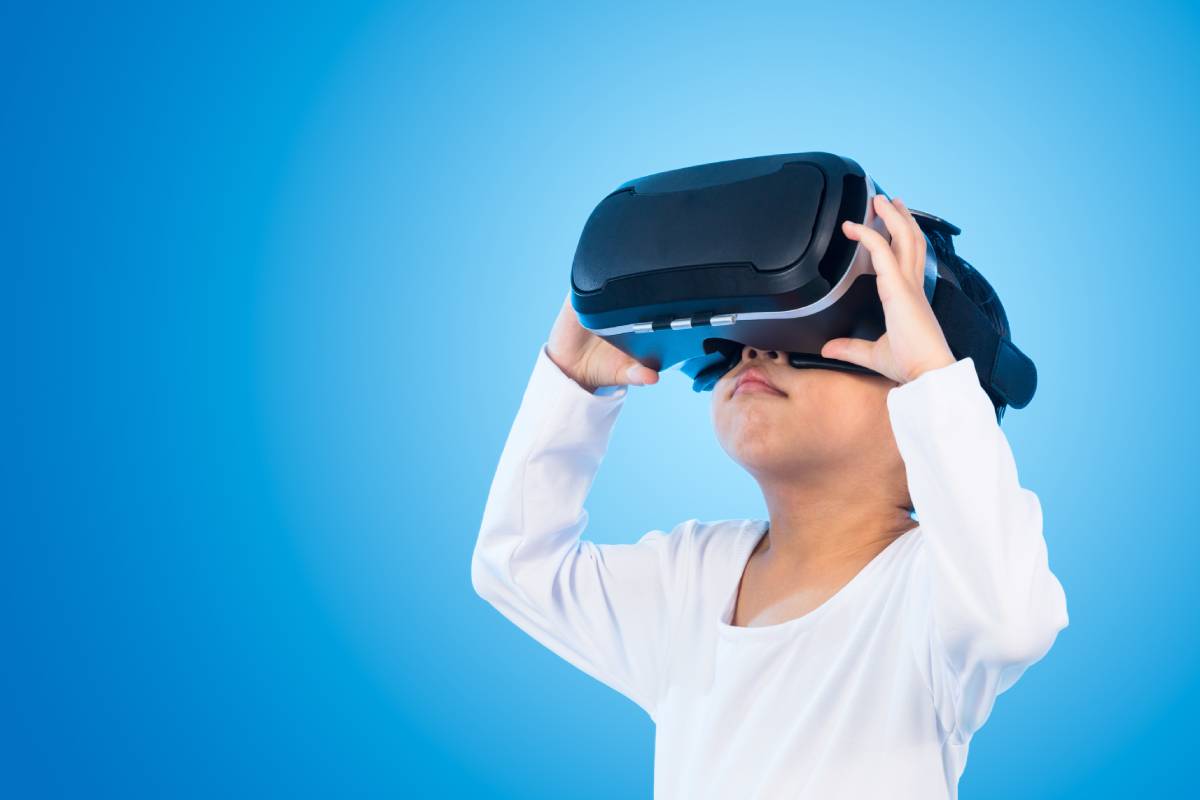Originally developed for the entertainment industry as the next generation of video gaming systems, “virtual reality” (VR) presents exciting applications for the medical field. With a headset or “head-mounted display” (HMD), headphones equipped with noise reduction, a “rumble pad,” and joystick device, users are immersed into a virtual environment, complete with virtual objects, characters, and scenes that appear real. Using built-in head-tracking programs, HMD systems are able to follow the movements of the user and adjust the graphics accordingly, giving them the illusion of being completely surrounded by the virtual environment [1]. Unlike the two-dimensional experiences of playing a video game or watching a movie, VR systems like Oculus Rift and Samsung Gear employ multimodal stimuli to create immersive, distinct virtual environments that submerge the user into a different world. Despite its origin as the next form of entertainment, VR technology has exciting potential in the medical field, especially in the context of pediatric medical procedures.
In recent years, VR has been utilized in a variety of clinical settings, such as in cancer care, mental health treatment, and pain management [2, 3]. For example, using VR as a form of exposure therapy was shown to significantly decrease symptoms of post-traumatic stress disorder (PTSD) in veterans [4] and reduce severe phobias in patients with panic disorders [5]. Moreover, many physicians and researchers have begun to utilize VR in extremely painful or frightening situations, such as in burn care, and routine medical procedures, like IV placement, especially in pediatric patients, due to the theory that VR engages parts of the brain involved in pain perception and takes the user’s attention away from pain, leading to a perceived reduction in pain [6, 7]. One recent study measured changes in pain ratings in patients suffering from pain during hospitalization who either engaged in VR three times a day for 10 minutes per session or were instructed to watch guided meditation or yoga videos for the same intervals. The decrease in pain ratings for the VR group was significantly larger than for the control group [6]. VR combined with analgesia also significantly decreases pain and anxiety in patients undergoing burn debridement compared to analgesia alone [8].
Pediatric patients are particularly likely to experience anxiety, fear, and/or treatment non-adherence surrounding medical care due to the discomfort associated with routine procedures , and therefore may benefit from effective VR innovations [9]. In children, VR is particularly effective at reducing pain and anxiety — according to a large, randomized control trial, pediatric patients undergoing painful and distressing procedures such as intravenous catheter placement and blood draws who played a VR game during the procedure had significantly lower post-procedure pain and anxiety compared to patients who received only standard care and distraction techniques (i.e., coloring or listening to music) [9].
However, even though VR is one of the most effective methods of reducing pain and anxiety in pediatric patients, it is also one of the least commonly used [9]. Many experts recommend implementing VR in pediatric procedures in the future, especially as VR systems continue to become more cost-effective and accessible to healthcare providers [7].
References
- Cipresso, P., Giglioli, I., Raya, M., and Riva, G. (2018). The past, present, and future of virtual and augmented reality research: a network and cluster analysis of the literature. Frontiers in Psychology, vol. 9. DOI: 10.3389/fpsyg.2018.02086.
- Rothbaum, B., Hodges, L., and Kooper, R. (1997). Virtual reality exposure therapy. Journal of Psychotherapy Practice and Research, vol. 6. URL: https://www.ncbi.nlm.nih.gov/pmc/articles/PMC3330462/.
- Morris, L., Louw, Q., and Grimmer-Somers, K. (2009). The effectiveness of virtual reality on reducing pain and anxiety in burn injury patients: a systematic review. The Clinical Journal of Pain, vol. 25. DOI: 10.1097/AJP.0b013e3181aaa909.
- Rizzo, A., Difede, J., Rothbaum, B., Johnston, S., McLay, N., Reger, G., Gahm, G., Parsons, T., Graap, K., and Pair, J. (2009). VR PTSD exposure therapy results with active OIF/OEF combatants. Studies in Health Technology and Informatics, vol. 142. URL: https://pubmed.ncbi.nlm.nih.gov/19377167/.
- Da Costa, R., de Carvalho, M., Ribero, P., and Nardi, A. (2018). Virtual reality exposure therapy for fear of driving: analysis of clinical characteristics, physiological response, and sense of presence. Brazilian Journal of Psychiatry, vol. 40. DOI: 10.1590/1516-4446-2017-2270.
- Spiegel, B., Fuller, G., Lopez, M., Dupuy, T., Noah, B., Howard, A., Albert, M., Tashjian, V., Lam, R., Ahn, J., Dailey, F., Rosen, T., et al. (2019). Virtual reality for management of pain in hospitalized patients: a randomized comparative effectiveness trial. PLOS One, vol. 14. DOI: 10.1371/journal.pone.0219115.
- Li, A., Montano, Z., Chen, V., and Gold, J. (2012). Virtual reality and pain management: current trends and future directions. Pain Management, vol. 1. DOI: 10.2217/pmt.10.15.
- Das, D., Grimmer, K., Sparnon, A., McRae, S., and Thomas, B. (2005). The efficacy of playing a virtual reality game on modulating pain for children with acute burn injuries: a randomized controlled trial. BioMed Central Pediatrics, vol. 5. DOI: 10.1186/1471-2431-5-1.
- Gold, J., SooHoo, M., Laikin, A., Lane, A., and Klein, M. (2021). Effect of an immersive virtual reality intervention on pain and anxiety associated with peripheral intravenous catheter placement in the pediatric setting: a randomized clinical trial. JAMA Network, vol. 4. DOI: 10.1001/jamanetworkopen.2021.22569.

